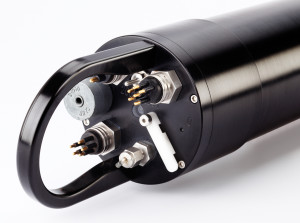Upon first impressions the LISST-200X appears to be just a smaller version of the LISST-100X. However much of what makes the LISST-200X such an improvement over the LISST-100X is what lies deep inside the instrument. Let’s explore these features in more detail to see why the LISST-200X is truly Smarter.

Comparison of LISST-200X and LISST-100X
The LISST-100X, which began as the LISST-100 in 1995, has a very simple file format. Because of historic and legacy reasons we were reluctant to make radical changes to the format. With the LISST-200X we started from scratch to make the file format work for us. With modern hardware memory is no longer a limiting factor. We can add lots of additional information to each file without worrying about storage space limitations.
The first thing we added was an extensive header to each file that is saved. This header includes detailed instrument information such as Instrument Serial number, Firmware version, calibration values, optical path length (including changes due to PRM use), Connector Endcap configuration and BioBlock installation status. The settings used for collecting the data including start and stop conditions, sample interval, measurements per average, samples per burst and burst interval are also stored in the header. Even a lifetime sample counter and lifetime laser on-time is included.
The LISST-200X, like the LISST-100X, requires certain instrument specific data to process the size distributions. The instrument specific factory background and Ring Area files along with a clean water background are all needed to process the recorded data. All of this information, including the most recent clean water background, is saved in the same file as the recorded data. This means that everything needed to compute the size distributions is included in one single file.
 Current users of the LISST-100X can really appreciate how important just having the files all in one place really is. Combine this with all the extra information about the instrument setup and the sampling configuration and it not much of an exaggeration that these changes alone can justify the upgrade to a LISST-200X. Especially for customers with multiple instruments being deployed at similar times.
Current users of the LISST-100X can really appreciate how important just having the files all in one place really is. Combine this with all the extra information about the instrument setup and the sampling configuration and it not much of an exaggeration that these changes alone can justify the upgrade to a LISST-200X. Especially for customers with multiple instruments being deployed at similar times.

LISST-200X Connector endcap showing 6-pin connector with analog outputs.
In addition to file format changes, we have also made additional internal improvements that make the LISST-200X smarter. One of our favorite new additions is the ability to compute the Sauter Mean Size and Total Volume Concentration on board the instrument in real time. This “Summary Data” is stored in the data file but is also converted to analog voltages that can be sent out to an external data logger such as a CTD. This allows the user to get instant information while still storing the more accurate detailed size distribution data on board the instrument for later processing.
Some other internal improvements include improved depth and temperature sensors, an internal humidity sensor and a 3-axis accelerometer that records the orientation of the instrument with every sample. We also made the software used with the LISST-200X smarter by automatically evaluating your clean water backgrounds and provide you with a Pass/Fail grade including suggestions on how to improve the background.
Connecting the instrument to the computer is also easier with the new USB communication cable that can also power the LISST-200X directly from the USB port.
We hope that you agree that the LISST-200X is truly more than just a smaller version of the LISST-100X.
For more information on the LISST-200X see the LISST-200X webpage.